Breeding efforts improve SPF white shrimp performance
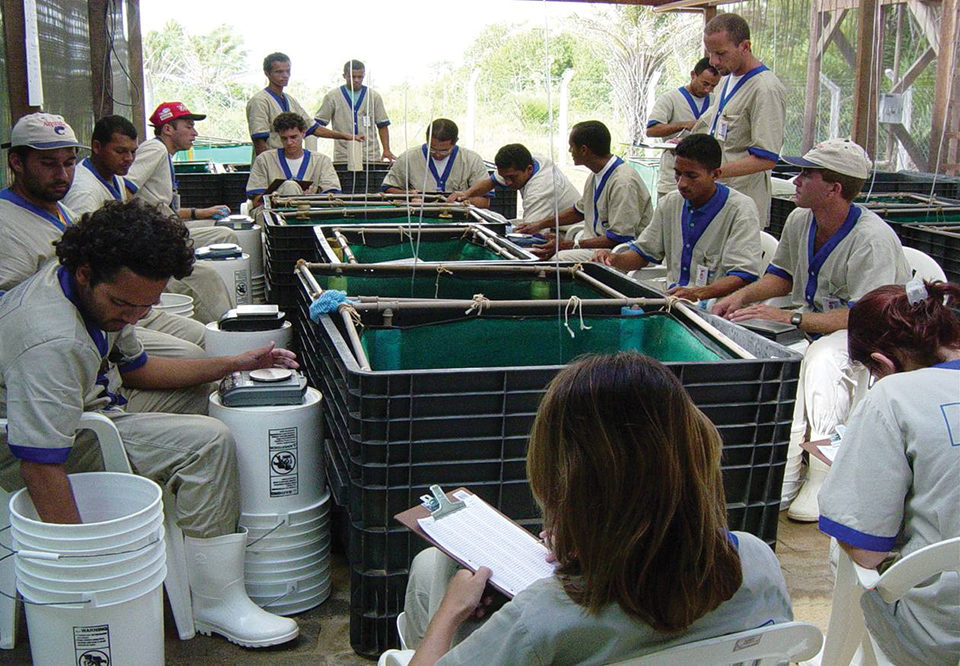
Aquatec, the leading shrimp-breeding company in Brazil with about 20 percent of the market for Pacific white shrimp postlarvae, has maintained a pedigreed genetic improvement program since 1996. Within a classical full-sib family structure relying on elastomer tagging of animals at sizes of 2 to 3 grams for family identification, 60 full-sib families were initially produced every year.
Since 2003, under the umbrella of a multinational company involved in animal genetic improvement, six annual batches of 60 (Penaeus vannamei) families each were the result of increased breeding efforts focused on selection for growth and survival in commercial production environments.
New genetic improvement center
In 2006, Aquatec discontinued its association with its parent company and created a new company, Genearch Aquacultura, to concentrate on the genetic improvement of specific pathogen-free (SPF) P. vannamei lines recently imported from the United States, the first SPF lines in Brazil.
A new Genetic Improvement Center for preservation of the SPF status of these lines is near completion, and their genetic improvement program is starting. Four SPF lines with different shrimp production characteristics were imported, and the selection process has involved a combination of family and within-family selection.
Since 2003, the Aquatec genetic improvement program has been characterized by family sizes of 350 shrimp, 200 of which are tested in the Genetic Nucleus (G.N.) under strict biosecurity and 150 are tested in commercial ponds. Broodstock replacements come exclusively from the animals held in the nucleus. Grow-out performance tests have yielded average harvest weights of around 15 grams.
Family selection is based on a selection index comprising family genetic merit estimates for four traits: both growth and survival in the G.N. and pond environments. Within-family selection for growth is made exclusively in the G.N. environment. Inbreeding is controlled through the mating schemes and pedigree knowledge for the selected families.
Genetic gains
Commercial multiplication schemes rely on a narrow genetic base for both commercial product uniformity and genetic protection. Over a generation interval of 10 months, heritability estimates of about 0.36 for growth are achieved.
Genetic gains have been estimated through commercial performance comparisons between selected and control families reared side by side in the same ponds. Figs. 1 and 2 illustrate these comparisons as conducted for one batch. Results to date show annual harvest weight improvement of around 1.8 g and 0.13 grams per week growth rate gains.
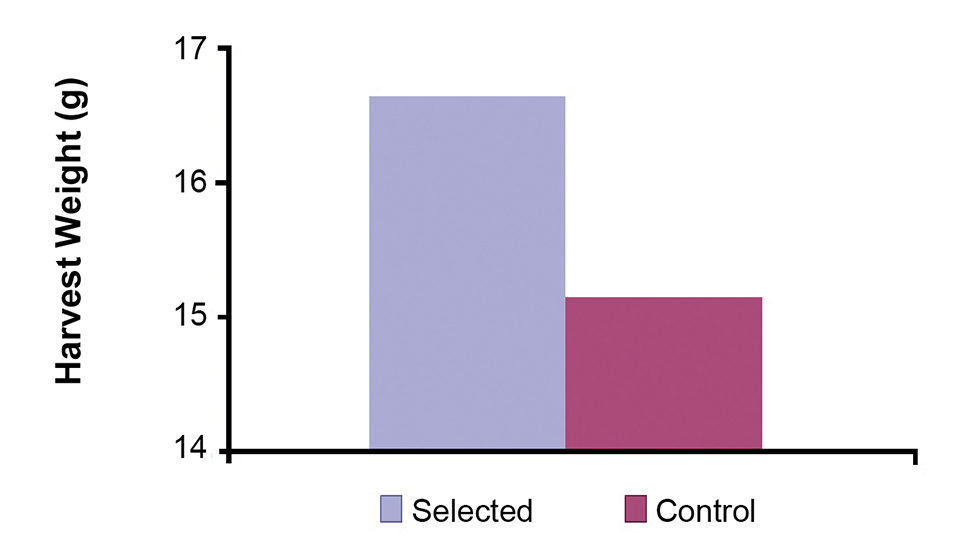
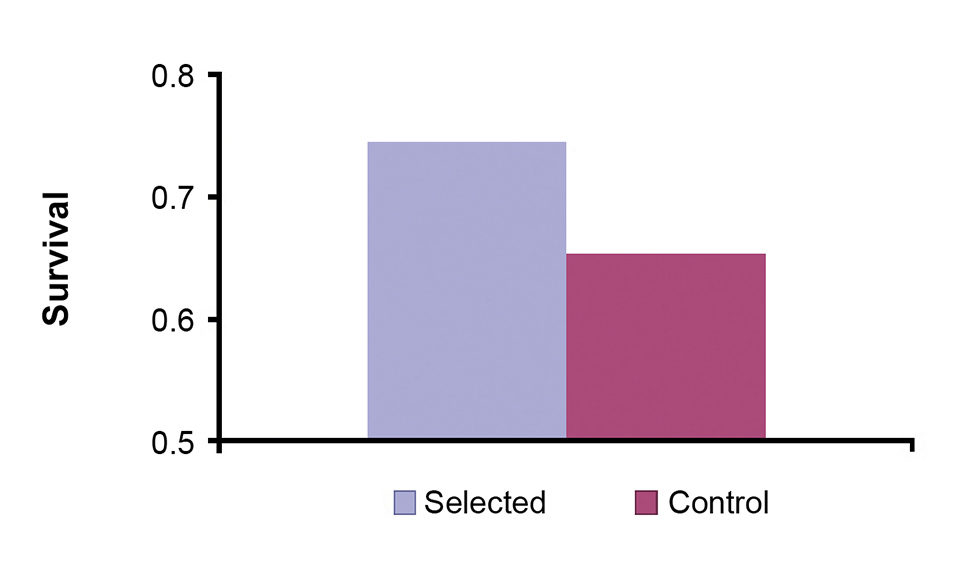
The phenotypic trends also show positive tendencies. Figs. 3 and 4 illustrate the phenotypic trends of rising survival rates and improved weekly growth for the last four years/generations in field tests carried out in commercial production ponds.
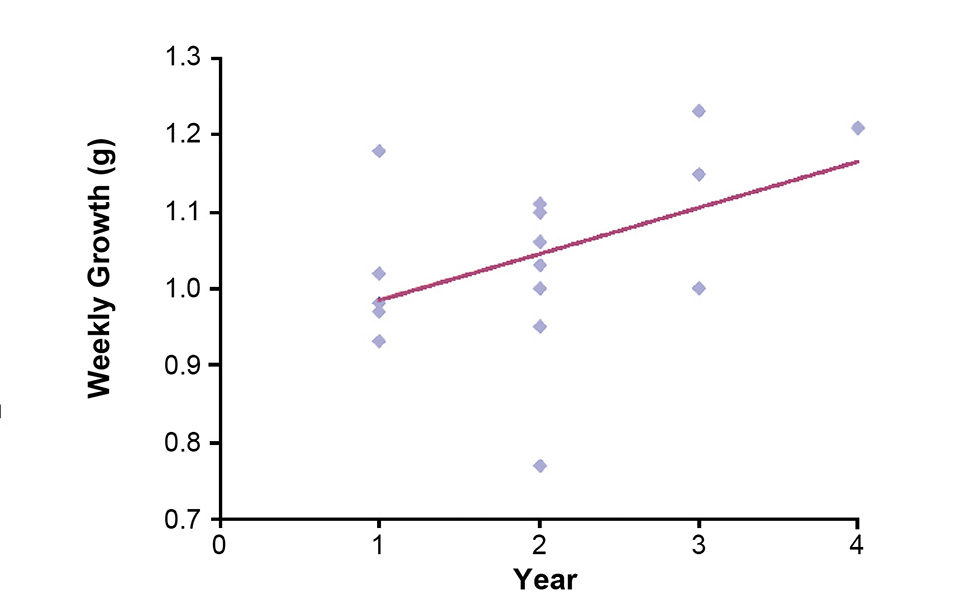
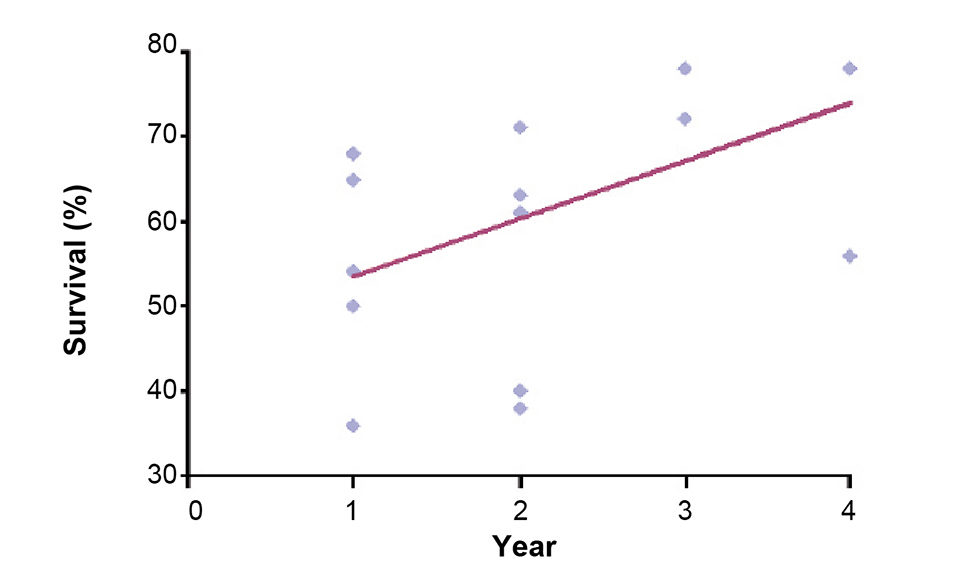
G x E interactions
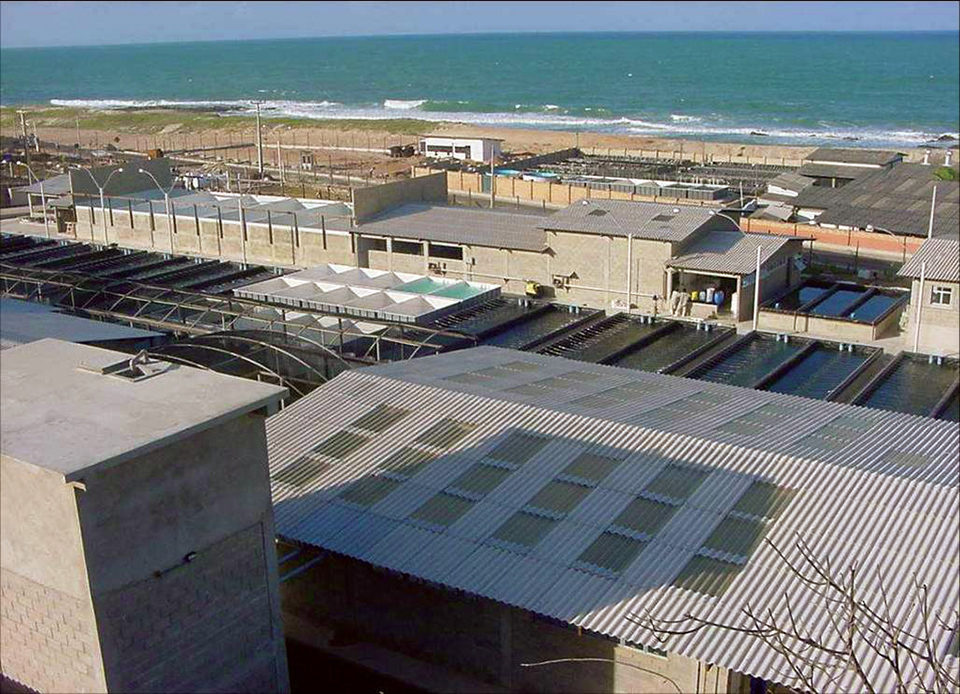
Concerns with genetic protection and commercial product uniformity led the authors to test hybrid shrimp improvement schemes following the hybrid corn model. The availability of three different founder populations in the program enabled the conducting of several diallel experiments and quantification of heterosis levels for different shrimp production traits.
Heterosis levels for shrimp survival and biomass production were typically in the 20 to 30 percent range. But strong G x E interactions for survival, sampling genetic effects, and low accuracy for the founder line estimates for cross-bred merit meant that in reality, batches would have to be composed of many more families if any reciprocal recurrent selection scheme were to be successful in the context of a commercial shrimp-breeding program. The limitations imposed by elastomer tagging precluded this possibility.
G x E interactions were found to be strong for survival, with phenotypic correlations of family means usually in the -0.1 to +0.2 range between the G.N. and commercial pond performance tests. Although G x E interactions for growth were less pronounced, phenotypic correlations of family means between the G.N. and pond environments seldom were higher than +0.5.
New pathology lab
A new Shrimp Pathology Laboratory is also being established by Genearch Aquacultura in Brazil. This laboratory will soon have the functional capacities to conduct the formal disease challenge tests that will enable the company to add specific pathogen-resistant (SPR) attributes to the imported SPF lines.
(Editor’s Note: This article was originally published in the July/August 2007 print edition of the Global Aquaculture Advocate.)
Now that you've finished reading the article ...
… we hope you’ll consider supporting our mission to document the evolution of the global aquaculture industry and share our vast network of contributors’ expansive knowledge every week.
By becoming a Global Seafood Alliance member, you’re ensuring that all of the pre-competitive work we do through member benefits, resources and events can continue. Individual membership costs just $50 a year. GSA individual and corporate members receive complimentary access to a series of GOAL virtual events beginning in April. Join now.
Not a GSA member? Join us.
Authors
-
João L. Rocha, Ph.D.
Aquatec and Genearch Aquacultura, Lda.
Barra de Cunhaú, Rio Grande do Norte
CEP 59190, Brazil -
Ana Carolina Guerrelhas, B.S.
Aquatec and Genearch Aquacultura, Lda.
Barra de Cunhaú, Rio Grande do Norte
CEP 59190, Brazil -
Ana Karina Teixeira, B.S.
Aquatec and Genearch Aquacultura, Lda.
Barra de Cunhaú, Rio Grande do Norte
CEP 59190, Brazil
Related Posts

Health & Welfare
A holistic management approach to EMS
Early Mortality Syndrome has devastated farmed shrimp in Asia and Latin America. With better understanding of the pathogen and the development and improvement of novel strategies, shrimp farmers are now able to better manage the disease.

Health & Welfare
A look at tilapia aquaculture in Ghana
Aquaculture in Ghana has overcome its historic fits and starts and is helping to narrow the gap between domestic seafood production and consumption. Production is based on Nile tilapia.

Intelligence
A motive, and a market, for farmed fish in Mexico
Boasting ample areas for aquaculture and a robust domestic demand for seafood – not to mention its close proximity to the U.S. market – a land of opportunity lies in Mexico. Fish farming is primed to meet its potential south of the border.

Aquafeeds
ASAIM addresses challenges to growth of marine fish farming in Southeast Asia
In its efforts to advance sustainable aquaculture practices and the use of soy-based feeds in Southeast Asia, the American Soybean Association International Marketing Program (USAIM) has identified several challenges.


